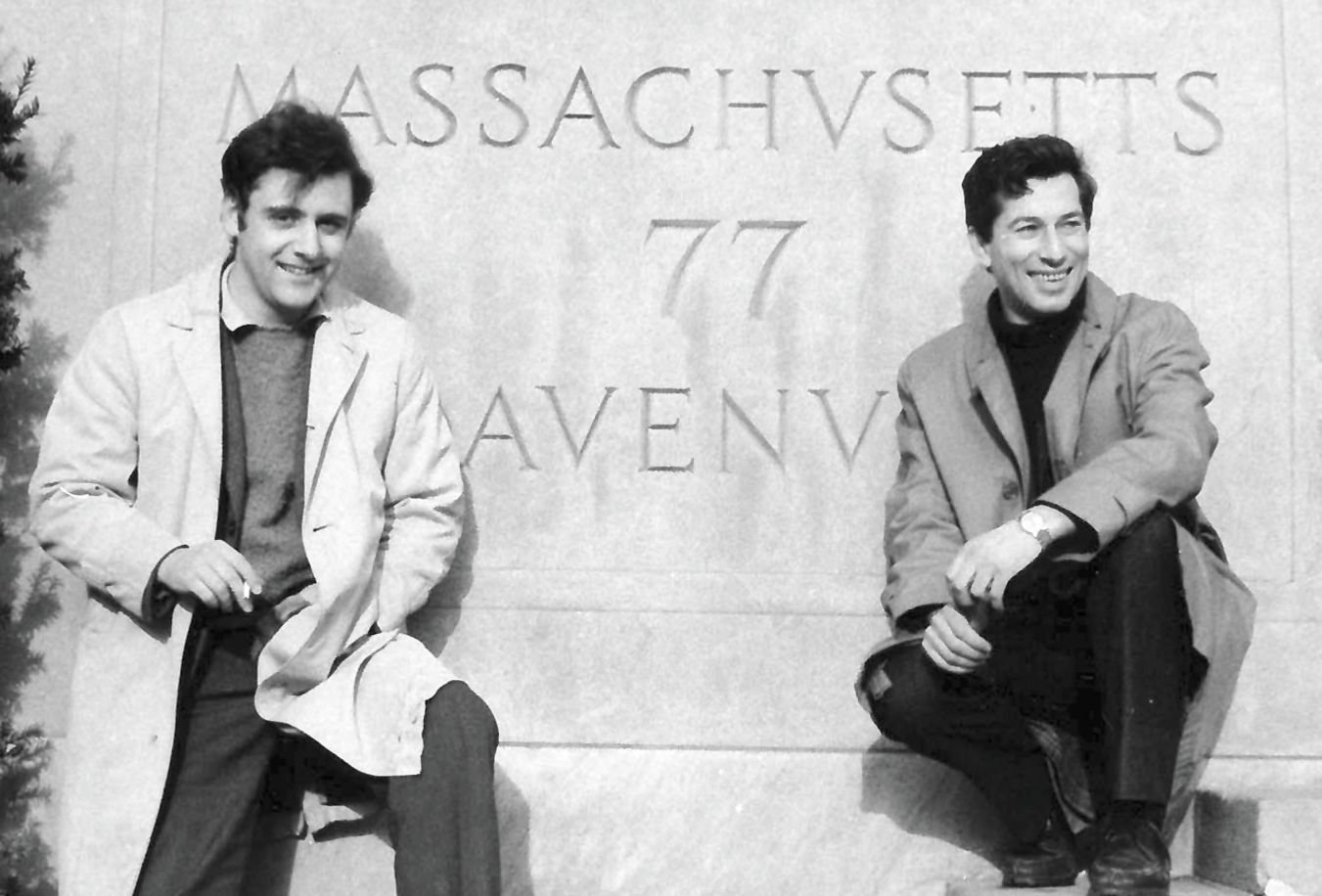Vittorio Degiorgio
DOI: 10.1063/PT.3.4730
Vittorio Degiorgio, a professor emeritus of physics at the University of Pavia in Italy, died at his home in Milan on 17 January 2021 after a long battle with cancer. Possessed of a remarkably curious and independent mind, he made numerous achievements in radiation–matter interaction, statistical physics, soft-matter science, and photonics. He investigated those sundry topics with a unifying and distinctive personal style.

Vittorio Degiorgio (right)

Milan, where Vittorio was born on 5 January 1939, was the social and cultural stage of his youth, education, and early career. Childhood was not kind to him. His mother, a high school teacher of Jewish origin, had been expelled from her public school job because of Italy’s racial laws. In 1943, because of the heavy bombing of Milan, Vittorio had to find shelter in the countryside, where he taught himself to read and write.
Vittorio described himself as “a good high school student, but not a top one,” who was particularly fond of the British empiricist philosophers. In 1957 he entered the Polytechnic University of Milan’s new MS program in nuclear engineering, which was limited at the time to 10 carefully selected students.
Vittorio graduated in 1963 after an experimental thesis done under the direction of Emilio Gatti, a trailblazer in the field of nuclear instrumentation. Gatti was also a director at CISE, a research center that was regarded as the Italian counterpart of Bell Labs. In 1964 Tito Arecchi, a young CISE scientist just back from Stanford University, proposed that Vittorio, on a fellowship at CISE, work on a “new light source with promising application”: the laser. Together with Bruno Querzoli, they published a successful 1967 paper on the statistical properties of coherent radiation. That work prompted Vittorio to try a US adventure, and in 1968 a Fulbright fellowship brought him to MIT.
In this photo, taken at the MIT entrance, Vittorio sits at the left of his best friend Marzio Giglio, with whom he shared an apartment—a feat in itself, for although Marzio was (and is) a bright scientist, he also was a rather messy guy.
At MIT, Vittorio was supposed to work in George Benedek’s group, but he soon started an independent research line and in just a year produced two scientific gems. The first, with Marlan Scully, pointed out the analogy between laser threshold and a second-order phase transition. The second, with John Lastovka, posed the basis for the optimal design of correlators for dynamic light scattering (DLS). Working at MIT was demanding and time-consuming, but Vittorio still made time to listen to the jazz piano concerts of his friend Ran Blake; the two last met in 2015 at an “aperitif in concert” in Milan.
Light scattering was Vittorio’s “gateway” to the investigation of complex fluids, which he worked on when he returned to Italy in 1970, first at CISE and since 1980 as a full professor at the University of Pavia. With Mario Corti, he studied interactions and phase transitions in surfactant solutions. His heyday in the field of soft matter was surely the 1990s, when his research interests broadened to encompass a wide class of systems ranging from model colloids to polyelectrolytes and liquid crystals. Those investigations led Vittorio to obtain seminal results about depolarized DLS, rotational Brownian dynamics, charge renormalization in macroions, and sedimentation of colloidal fluids.
Vittorio never neglected his youthful passion for nonlinear optics. In the late 1990s, he started a fruitful collaboration with Gianpiero Banfi on nonlinear properties of semiconductors and organic crystals and on cascaded nonlinear phenomena. Vittorio’s overwhelming and genuine scientific curiosity also led him toward the field of integrated photonics and optical communications. He focused on nonlinear waveguides for signal processing and on microstructured fibers, and he achieved key results on soliton dynamics and supercontinuum generation.
Gifted with an ability to organize and lead with remarkable poise, Vittorio was involved in several commissions of trust. He served on the physics panel of the European Union, the liquids board of the European Physical Society, and the Scientific Council of the European Laboratory for Non-Linear Spectroscopy, among others, and was vice president of the Italian Institute for the Physics of Matter. He fulfilled his duties with generosity and spirit of service.
Working with Vittorio for many years, we had the chance to appreciate and admire his superb skills in scrutinizing experimental evidence, dissecting arguments, and rejecting hasty conclusions. In addition to being a first-class scientist, he was an outstanding teacher; although he was rigorous, he was clear and descriptive. The book on photonics he published with one of us (Cristiani) in 2014 testifies to his dedication to the education of young scientists. Above all, Vittorio was fair and a man of principle, gifted with intellectual honesty and strengthened by a vast literary culture. His colleagues and friends miss him greatly.
More about the Authors
Roberto Piazza. Polytechnic University of Milan, Milan, Italy.
Ilaria Cristiani. University of Pavia, Pavia, Italy.
